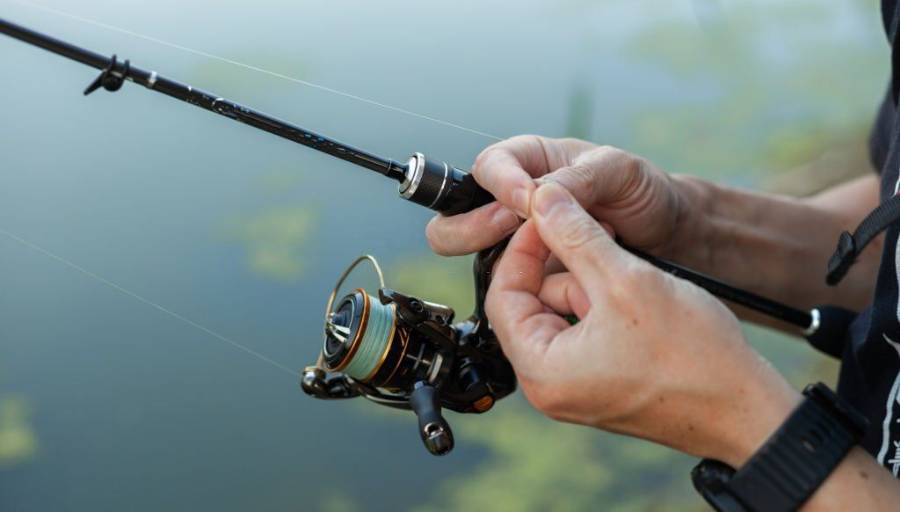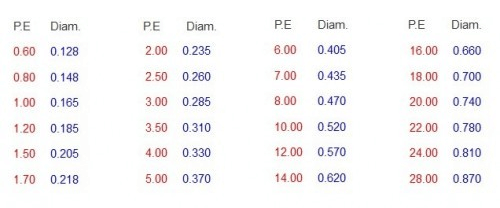
Finding the right line for fishing is essential. We can choose the best fishing rod, the most effective reel, the most correct among the hooks, the most suitable among the baits … and yet, if we get the fishing line wrong, we cancel the effectiveness of all the choices made up to that moment.
Of course, it used to be easier as there were very few choices on the market. Indeed, in the end, it all boiled down to nylon, to be coupled with that or that other hook, and nothing more. However, on the market, we find many different fishing lines, designed to be totally wrong and unsuitable for other uses.
Today we will see what are the main fishing lines, understand the pros and cons of each material, and know how to choose fishing line. Enjoy the reading!
How to Choose Fishing Line
Choose the line: nylon
Let’s start with the classic, traditional choice that is with nylon. It is an “old” fishing line, but this does not mean that it does not have any advantages. In terms of value for money, nylon is unbeatable. All fishermen at any level practically always use nylon in their respective rigs (at least at the level of the main line).
Those who do not use the braid, which we will see shortly, especially in the field of spinning. Choose a nylon fishing line in surfcasting and in bottom fishing to ensure high softness. However, the elasticity varies from model to model, but elasticity looks exactly at these lines, which thus becomes perfect to reduce the risk of making wigs (typical problems of the most rigid threads).
The elasticity offers the advantage of less stress on the tackle and mitigating the stiffness of an overly reactive fishing rod. However, sensitivity can only be affected. Compared to the braided line, nylon is light and tends to float, whereas the braid will always be close to sinking.
Which fishing line? The braided line
With the braided line, we go to the opposite extreme compared to the nylon line: actually, we are talking about a very rigid fishing line. So we are dealing with a decidedly inelastic line with zero elasticity, which has the advantage of having a very high breaking load. This means that with the braided line, we can go to reel some lines with a reduced diameter while having the guarantee of having a lot of resistance and improving the launches.
The enemy of the braid is therefore not the load; it fears abrasion, and therefore contact with any branches or stones. Another disadvantage of the braided line is visibility accentuated, much higher than that of nylon. It therefore becomes necessary to use longer terminals to camouflage the line.
The cost of braided fishing line (made with a weave of polyethylene threads) is slightly higher than that of nylon. The more you are willing to spend, the less the braid will have a tendency to get greasy and knot.
The diameter
The main characteristic and already, at this level, it gets complicated: Japanese manufacturers have the habit of indicating the diameter by a section: PE 1, PE 1.5, PE 2, etc. while Europeans and Americans express a diameter in millimeters. Also, the section curve (PE) does not evolve in the same way as the diameter.
Here is a small summary table to help you!

However, I can only warn the fisherman about the quality of the manufacturers’ information… Not always realistic with their product. The Japanese seem much more precise in their measurement with a very small, almost insignificant difference!
The leap in quality: fluorocoated fishing line
A nylon fishing line with an edge. Fluorocoated is a line with a nylon core and a fluorocarbon coating, which can be done with one or more layers. Why are these two materials combined? Simple: in this way, you will have a fishing line that is more resistant to abrasion and at the same time invisible.
Besides this, the coating does not excessively dampen the elasticity of the nylon, so as to still have a fairly elastic fishing line. It is therefore a compromise between nylon thread and fluorocarbon thread.
For those who are not satisfied: fluorocarbon fishing line
Undoubtedly expensive, fluorocarbon has revolutionized the style and way of fishing for so many people. This line combines two great advantages; invisibility in the water and great resistance to abrasion.
As you can guess, fluorocarbon represents the perfect terminal for a braided line. Due to its stiffness, fluorocarbon is not particularly easy to reel, so a little distraction is enough to create wigs. However, it is an ideal choice for those who looking for great sensitivity and fish in calm and clear sea. To get the most out of it, it should be emphasized that you need to look for a 100% fluorocarbon thread!
Resistance
There is still a small difference in the units of measurement! On one side the Kilograms and on the other the pounds! Be careful to check the unit of measurement. A pound is worth 0.45359237 kilograms, but here again, the measurements displayed by the manufacturers are not the most reliable except for the exception of Japanese braids!!!
The fishing line without memory
At this point it is worth explaining an expression that many novice anglers may have found in e-commerce of fishing accessories as in other places: we are talking about the “memoryless” fishing line. These words could be confusing. We are certainly not talking about a device equipped with a fixed disk or the like; we are still talking about a line, be it a braided line or a nylon line.
The term memory in the jargon of accessories for sport fishing means the tendency of the line to maintain the shape taken in the reel. A wire with a marked memory will tend to maintain the “coils” even during use. And there is no doubt, in some techniques, the presence of a strong memory of the thread can create difficulties. For example, think of fishing at consistent depths: in these cases, only a fishing line without memory will allow the fisherman to perfectly distinguish the bites.
The Esther hypothesis
We close this list on how to choose fishing line with a hint of the Ester fishing line. We are talking about a type of thin, very rigid thread (even more than fluorocarbon) but with an important specific weight to improve the launch with particularly small baits such as spoon and micro jig. This type of line is suitable for all light techniques such as spinning.
Conclusion
As for the brands of fishing lines, I recommend not to save too much, especially for the purchase of lines to make the armrests. We can hope that in the near future, a global standard will facilitate and force manufacturers to give realistic values on the product and not approximate with a single test and measurement for all manufacturers.
I recommend that beginners go directly to the store to make a choice and ask the seller to open and touch the braid to assess the real diameter! Avid anglers are happy to share their advice with beginners who are just learning the wisdom of fishing. So put your thoughts in the comment section below.
Frequently Asked Questions (FAQs):
Here’s a FAQs section to guide you on how to choose fishing line:
What types of fishing lines are available?
There are three main types of fishing lines: monofilament, fluorocarbon, and braided. Each type has its own characteristics and is suitable for different fishing situations.
What is monofilament line, and when should I use it?
Monofilament is a single-strand nylon line. It’s versatile and suitable for various fishing applications. It has good stretch, buoyancy, and is generally more affordable. Use monofilament for general-purpose fishing, such as freshwater fishing or when casting in open water.
When should I choose fluorocarbon line?
Fluorocarbon line is nearly invisible underwater and has low stretch. It’s ideal for situations where fish are line-shy, and sensitivity is crucial. Use fluorocarbon for finesse techniques, clear water conditions, and when you need a sinking line.
Should I use a leader with my fishing line?
Using a leader can be beneficial, especially with braided or fluorocarbon lines. A leader provides added abrasion resistance and can make your setup less visible to fish. Use a leader when fishing in clear water or when targeting species with sharp teeth.
Can I mix different types of fishing lines on the same reel?
While it’s technically possible, it’s not recommended to mix different types of lines on the same reel. The characteristics of each line type can affect casting and performance. Stick to one type of line for the best results.